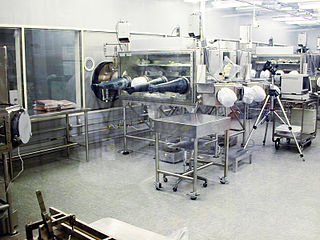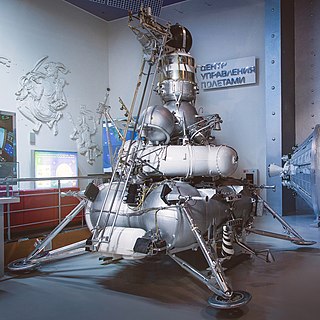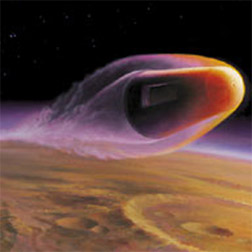 W
WA sample-return mission is a spacecraft mission to collect and return samples from an extraterrestrial location to Earth for analysis. Sample-return missions may bring back merely atoms and molecules or a deposit of complex compounds such as loose material ("soil") and rocks. These samples may be obtained in a number of ways, such as soil and rock excavation or a collector array used for capturing particles of solar wind or cometary debris.
 W
WA Mars Sample-Return (MSR) mission is a proposed spaceflight mission to collect rock and dust samples on Mars and then return them to Earth. Sample-return would be a very powerful type of exploration, because the analysis is freed from the time, budget, and space constraints of spacecraft sensors.
 W
WApollo 12 was the sixth crewed flight in the United States Apollo program and the second to land on the Moon. It was launched on November 14, 1969, from the Kennedy Space Center, Florida. Commander Charles "Pete" Conrad and Lunar Module Pilot Alan L. Bean performed just over one day and seven hours of lunar surface activity while Command Module Pilot Richard F. Gordon remained in lunar orbit.
 W
WApollo 14 was the eighth crewed mission in the United States Apollo program, the third to land on the Moon, and the first to land in the lunar highlands. It was the last of the "H missions", landings at specific sites of scientific interest on the Moon for two-day stays with two lunar extravehicular activities.
 W
WApollo 15 was the ninth crewed mission in the United States' Apollo program and the fourth to land on the Moon. It was the first J mission, with a longer stay on the Moon and a greater focus on science than earlier landings. Apollo 15 had the first use of the Lunar Roving Vehicle.
 W
WApollo 16 was the tenth crewed mission in the United States Apollo space program, the fifth and penultimate to land on the Moon, and the second to land in the lunar highlands. The second of Apollo's "J missions," it was crewed by Commander John Young, Lunar Module Pilot Charles Duke and Command Module Pilot Ken Mattingly. Launched from the Kennedy Space Center in Florida at 12:54 PM EST on April 16, 1972, the mission lasted 11 days, 1 hour, and 51 minutes, and concluded at 2:45 p.m. EST on April 27.
 W
WApollo 17 was the final Moon landing mission of NASA's Apollo program, and remains the most recent time humans have travelled beyond low Earth orbit. Its crew consisted of Commander Eugene Cernan, Lunar Module Pilot Harrison Schmitt, and Command Module Pilot Ronald Evans, and it carried a biological experiment containing five mice.
 W
WCAESAR is a sample-return mission concept to comet 67P/Churyumov–Gerasimenko. The mission was proposed in 2017 to NASA's New Frontiers program mission 4, and on 20 December 2017 it was one of two finalists selected for further concept development. On 27 June 2019, the other finalist, the Dragonfly mission, was chosen instead.
 W
WChang'e 5 is the fifth lunar exploration mission of the Chinese Lunar Exploration Program, and China's first lunar sample-return mission. Like its predecessors, the spacecraft is named after the Chinese moon goddess Chang'e. It launched at 20:30 UTC on 23 November 2020 from Wenchang Spacecraft Launch Site on Hainan Island, landed on the Moon on 1 December 2020, collected ~1,731 g (61.1 oz) of lunar samples, and returned to the Earth at 17:59 UTC on 16 December 2020.
 W
WCOmet Nucleus Dust and Organics Return (CONDOR) is a mission concept to retrieve a sample from comet 67P/Churyumov–Gerasimenko to test ideas regarding Solar System formation, and accretion of rocky planets with habitable surface environments.
 W
WThe curation of extraterrestrial samples (astromaterials) obtained by sample-return missions take place at facilities specially designed to preserve both the sample integrity and protect the Earth. Astromaterials are classified as either non-restricted or restricted, depending on the nature of the Solar System body. Non-restricted samples include the Moon, asteroids, comets, solar particles and space dust. Restricted bodies include planets or moons suspected to have either past or present habitable environments to microscopic life, and therefore must be treated as extremely biohazardous.
 W
WFobos-Grunt or Phobos-Grunt was an attempted Russian sample return mission to Phobos, one of the moons of Mars. Fobos-Grunt also carried the Chinese Mars orbiter Yinghuo-1 and the tiny Living Interplanetary Flight Experiment funded by the Planetary Society.
 W
WGenesis was a NASA sample-return probe that collected a sample of solar wind particles and returned them to Earth for analysis. It was the first NASA sample-return mission to return material since the Apollo program, and the first to return material from beyond the orbit of the Moon. Genesis was launched on August 8, 2001, and the sample return capsule crash-landed in Utah on September 8, 2004, after a design flaw prevented the deployment of its drogue parachute. The crash contaminated many of the sample collectors. Although most were damaged, some of the collectors were successfully recovered.
 W
WHayabusa was a robotic spacecraft developed by the Japan Aerospace Exploration Agency (JAXA) to return a sample of material from a small near-Earth asteroid named 25143 Itokawa to Earth for further analysis. Hayabusa, formerly known as MUSES-C for Mu Space Engineering Spacecraft C, was launched on 9 May 2003 and rendezvoused with Itokawa in mid-September 2005. After arriving at Itokawa, Hayabusa studied the asteroid's shape, spin, topography, color, composition, density, and history. In November 2005, it landed on the asteroid and collected samples in the form of tiny grains of asteroidal material, which were returned to Earth aboard the spacecraft on 13 June 2010.
 W
WHayabusa2 is an asteroid sample-return mission operated by the Japanese state space agency JAXA. It is a successor to the Hayabusa mission, which returned asteroid samples for the first time in June 2010. Hayabusa2 was launched on 3 December 2014 and rendezvoused in space with near-Earth asteroid 162173 Ryugu on 27 June 2018. It surveyed the asteroid for a year and a half and took samples. It left the asteroid in November 2019 and returned the samples to Earth on 5 December 2020 UTC. Its mission has now been extended through at least 2031, when it will rendezvous with the 1998 KY26 asteroid.
 W
WLuna 15 was a robotic space mission of the Soviet Luna programme, that crashed into the Moon on 21 July 1969.
 W
WLuna 16 was an uncrewed space mission, part of the Soviet Luna program. It was the first robotic probe to land on the Moon and return a sample of lunar soil to Earth. The 101 grams sample was returned from Mare Fecunditatis. It represented the first lunar sample return mission by the Soviet Union and was the third lunar sample return mission overall, following the Apollo 11 and Apollo 12 missions.
 W
W{{Short description|1972 lunar sample retrieval mission as part of the USSR's Luna program}
 W
WLuna 23 was an unmanned space mission of the Luna program developed by the Soviet Union.
 W
WLuna 24 was a robotic probe of the Soviet Union's Luna programme. The last of the Luna series of spacecraft, the mission of the Luna 24 probe was the third Soviet mission to return lunar soil samples from the Moon. The probe landed in Mare Crisium. The mission returned 170.1 g (6.00 oz) of lunar samples to the Earth on 22 August 1976.
 W
WThe Martian Moons eXploration (MMX) is a robotic space probe set for launch in 2024 to bring back the first samples from Mars' largest moon Phobos. Developed by the Japanese Aerospace Exploration Agency (JAXA) and announced on 9 June 2015, MMX will land and collect samples from Phobos once or twice, along with conducting Deimos flyby observations and monitoring Mars' climate.
 W
WOSIRIS-REx is a NASA asteroid-study and sample-return mission. The mission's primary goal is to obtain a sample of at least 60 g (2.1 oz) from 101955 Bennu, a carbonaceous near-Earth asteroid, and return the sample to Earth for a detailed analysis. The material returned is expected to enable scientists to learn more about the formation and evolution of the Solar System, its initial stages of planet formation, and the source of organic compounds that led to the formation of life on Earth.
 W
WThe Sample Collection for Investigation of Mars (SCIM) is a mission concept for a Mars air and dust sample return. It was a semi-finalist at the Mars Scout Program along with four other missions in December 2002. The SCIM mission would be designed to skim through the Mars atmosphere without landing or entering orbit. It would collect samples in an aerogel and take them back to Earth on a free-return trajectory.
 W
WStardust was a 390-kilogram robotic space probe launched by NASA on 7 February 1999. Its primary mission was to collect dust samples from the coma of comet Wild 2, as well as samples of cosmic dust, and return these to Earth for analysis. It was the first sample return mission of its kind. En route to comet Wild 2, the craft also flew by and studied the asteroid 5535 Annefrank. The primary mission was successfully completed on 15 January 2006, when the sample return capsule returned to Earth.
 W
WThe Tanpopo mission is an orbital astrobiology experiment investigating the potential interplanetary transfer of life, organic compounds, and possible terrestrial particles in the low Earth orbit. The purpose is to assess the panspermia hypothesis and the possibility of natural interplanetary transport of microbial life as well as prebiotic organic compounds.